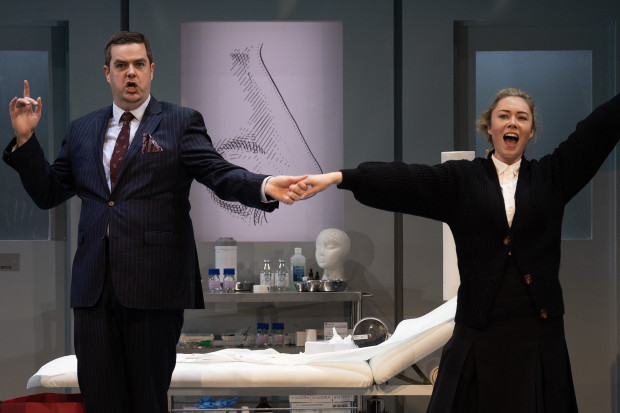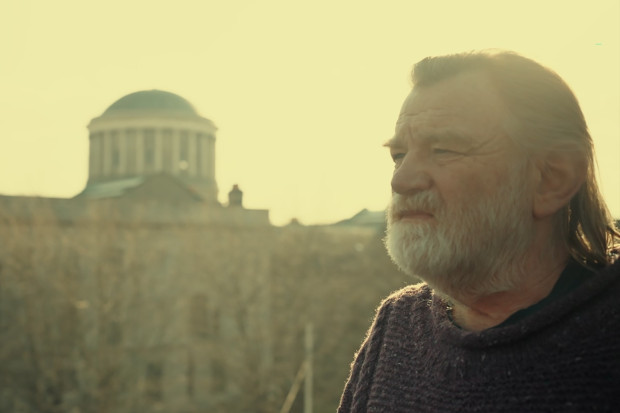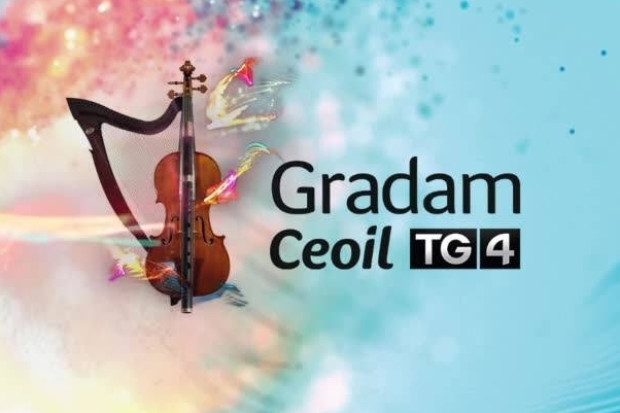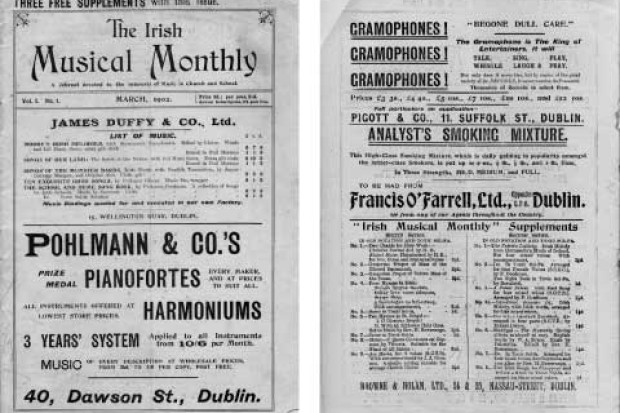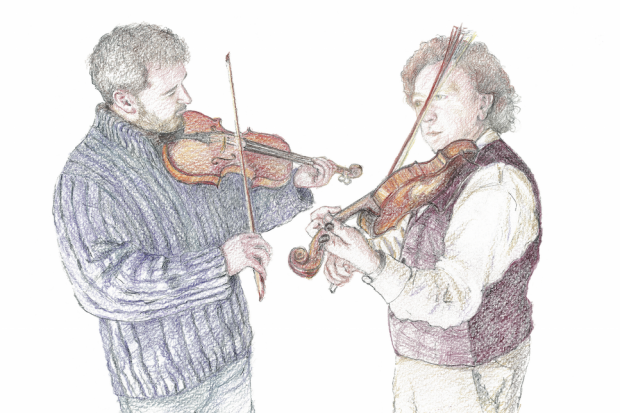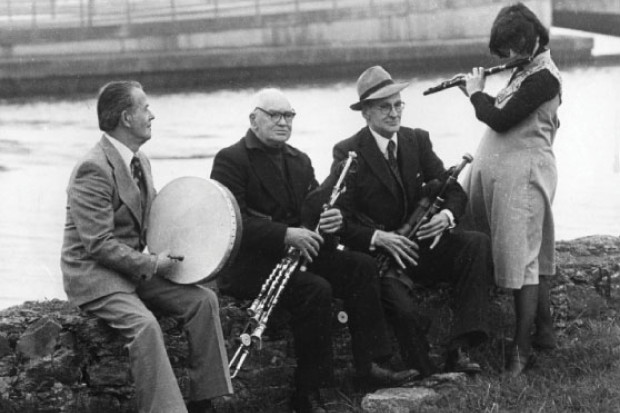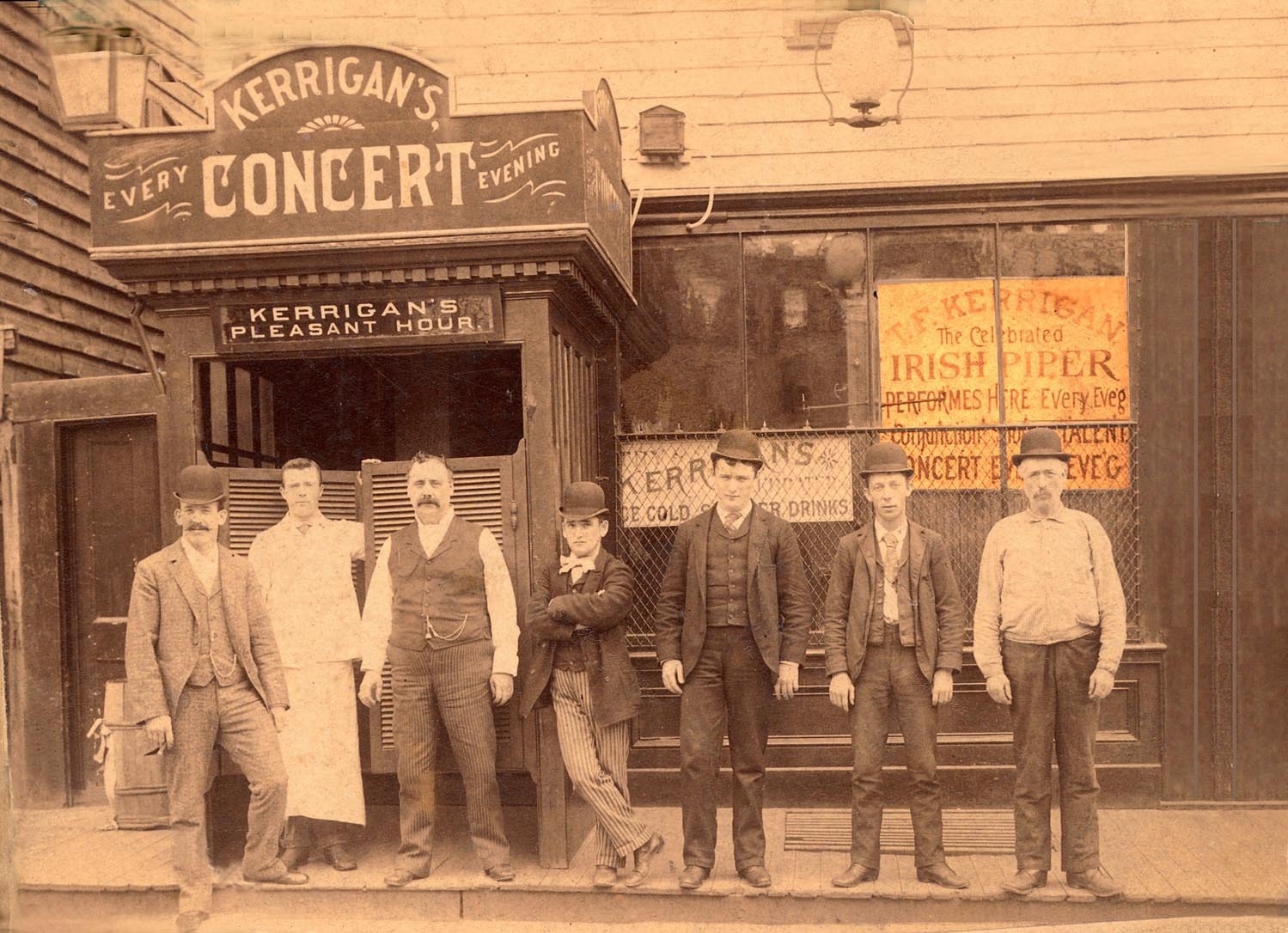
'Kerrigan's Pleasant Hour' on 42nd Street, New York City; Thomas Kerrigan (1843–1898) is third from left. / Photo by unidentified photographer – from the exhibition 'From the Bridge'
New Online Exhibition Explores Irish Traditional Music in New York
The Irish Traditional Music Archive has launched a new online exhibition focusing on Irish traditional music in New York.
The US city has had a key role in the history of Irish traditional music due to the arrival of huge numbers of Irish emigrants following the Great Famine of the 1840s, and many of the early and most influential recordings of Irish music emanated from there.
The new exhibition, titled From the Bridge: A View of Irish Traditional Music in New York has been curated by New York musician and historian Don Meade, and folklorist Rónán Galvin, and the website showcases rare recordings, photographs and videos over 150 years. The exhibition was launched yesterday (29 June) at the Archive in Dublin by concertina player Noel Hill.
1870s to 2000s
The exhibition is divided into five sections: ‘Early Years 1870s–1900s’, ‘Recording Age, 1899–1930s’, ‘Post World War II, 1940s–1960s’, ‘Revival Years, 1970s–1990s’, and ‘Present Day, 2000s–’. Each section provides biographies of a number of artists, photographs, rare recordings, and videos for more recent times.
‘Early Years 1870s–1900s’ includes information on piper Thomas Kerrigan (1843–1898) from Longford who moved to New York in 1863. He told collector Francis O’Neill that his people had ‘been pipers for more than 200 years’ and he became proprietor of a music hall in New York called Kerrigan’s Pleasant Hour. There is also information in the exhibition on the dancer Kitty O’Neill (1855–1893)
‘Recording Age 1899–1930s’ explores an age when New York in the 1920s was ‘the Irish music capital of the world’. The exhibition describes the impact:
New York musicians played with fast-paced virtuosity and added a touch of big city glamour to the rural dance tunes. Traditional musicians in Ireland began to emulate the music they heard on the records, making the repertoire of the 78 rpm recording artists from New York a de facto national standard that persists in Ireland to this day.
This section explores the work of artists such as Michael Coleman, John McKenna, Eddie Burke, Margaret McNiff-Locke, the McNulty Family and more.
New generations
‘Post World War II, 1940s–1960s’ records the emergence of teachers such as fiddlers James Morrison, Hugh Gillespie and John McGrath who conducted classes for hundreds of youngsters whose parents wanted the next generation to play. This part of the exhibition also features Paddy Killoran, Martin Wynne and fiddle-player Catherine Brennan-Grant, who was a good friend of Michael Coleman and a teacher to fiddle-player Andy McGann.
‘Revival Years 1970s–1990s’ explores how the music continued to develop in New York and includes a focus on musicians such as Joanie Madden, Brian Conway, Billy McComiskey, Eileen Ivers and many others. ‘Present Day 2000s–’ includes biographies of artists currently based in New York, including Kevin Crawford and Cillian Vallely from the group Lúnasa, musician and scholar Mick Moloney, and fiddle-players Rose Flanagan and Katie Linnane.
The exhibition is drawn from collections by Louis Quinn, Charlie Mulvihill and Terry Rafferty and current ITMA holdings. It also includes an essay by Don Meade, and the 1980s documentary Shore To Shore: Irish Traditional Music In New York City by Patrick Mullins.
To explore the full exhibition, visit https://www.itma.ie/newyork.
Published on 30 June 2022












